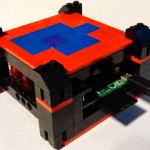Raspberry PiFace
I have been using a Raspberry Pi for various things since it was invented. It is a great little low cost computer. We recently celebrated Pi Day (3/14/15) here in the USA. Our local Science Center hosted a Pi Day programming workshop using Raspberry Pi, and my teenage daughter attended with her cousin and a friend. The following day, Anna showed me on her Ubuntu laptop how to use Scratch to perform some programming, and also showed me the Squirrel Eat Squirrel game in Python that she modified.
At the BACnet Summer 2014 meeting, I was given a Raspberry Pi and a PiFace card when I was presented the BACnet Swan Award. During that meeting, I decided it would be fun to play with the Raspberry Pi and the PiFace card. I first made a Raspian SD card, connected an Ethernet cable from my laptop, connected to the Raspberry Pi via SSH, downloaded the PiFace interface code, installed the build tools (apt-get build-essentials) and BACnet Protocol Stack, and wrote a quick BACnet example application that modeled the inputs as Binary Inputs and relays as Binary Outputs using the open source BACnet Protocol Stack library hosted on Sourceforge.net. I posted the project in the demo/ folder of the project during the meeting. My friend David Fisher, who originated the BACnet Swan Award in memory of our friend Bill Swan, kindly tested the BACnet interface to verify interoperability (and make some relays click!) over the WiFi LAN we configured for the meeting.
